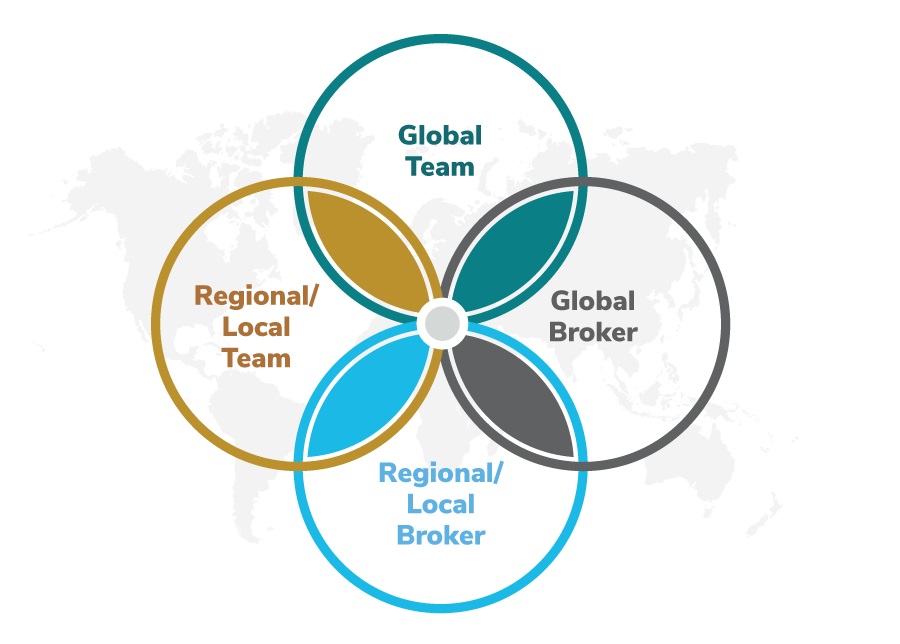How do global benefits leaders effectively manage health, well-being and benefits across multiple countries? It is no small task. Having responsibility for dozens of countries, many with multiple plans per country, as well as limited internal benefit teams, increases the challenge. Implementing a global strategy requires local knowledge in addition to a strategic global mindset. This is where a robust governance structure enables success.
According to Business Group on Health’s Global Brokers Survey, 52% of responding employers leverage a global broker to meet their objectives. Furthermore, based on discussions with member companies, that number is growing. This finding illustrates how global brokers often become part of a key governance strategy (Figure 1). What is needed to build a successful global broker relationship? The following qualities were mentioned frequently by survey respondents;
- Consistently engaging key stakeholders;
- Alignment to and communication of the company strategy; and
- Strong account management and communication skills.

Business Group on Health’s recently published Employer Guide: Strategic and Effective Global Broker Partnership, shares best practices across various phases of the global broker relationship, including building the business case; contracting, including request for proposal (RFP) and statement of work (SOW); implementation; and ongoing management. Bringing rigor to the process in each of these phases enhances strategy and structure, allows transparency of local capabilities and highlights how technology can be leveraged for improved analytics.
Some issues to consider include the following:
- For companies that don’t have a global benefits philosophy or guidelines in writing, consider developing both. Providing potential broker partners with your strategy and/or guiding principles during the request for purchase (RFP) process will assist in establishing proper expectations.
- Consider your company’s structure. If your company has a decentralized structure, it can be more challenging to build consensus for a global broker and may increase the number of stakeholders you will need to engage. On the other hand, having a global broker can provide consistency across a decentralized structure.
- Limited resources are often a company’s biggest barrier. A global broker can assist with resource limitations, which has turned out to be a key rationale for bringing in a global broker in most business cases. Critical stakeholders are regional and local staff; by engaging them early in the process of selecting a global broker and ensuring that their voices heard will make implementation successful.
- Outline your current challenges and gaps regarding service quality and access, costs, administration, data, analytics, and regulatory and internal governance compliance. Prioritize these challenges based on the company’s business and benefits strategies and identify how a global broker could address these needs.
For more employer tools and examples, Business Group members may access the Strategic and Effective Global Broker Partnership Employer Guide, as well as related resources, such as: benefit harmonization, M&A integrations, global minimum core benefits, along with resources on purchasing strategies, such as local remarketing and multinational pooling.
